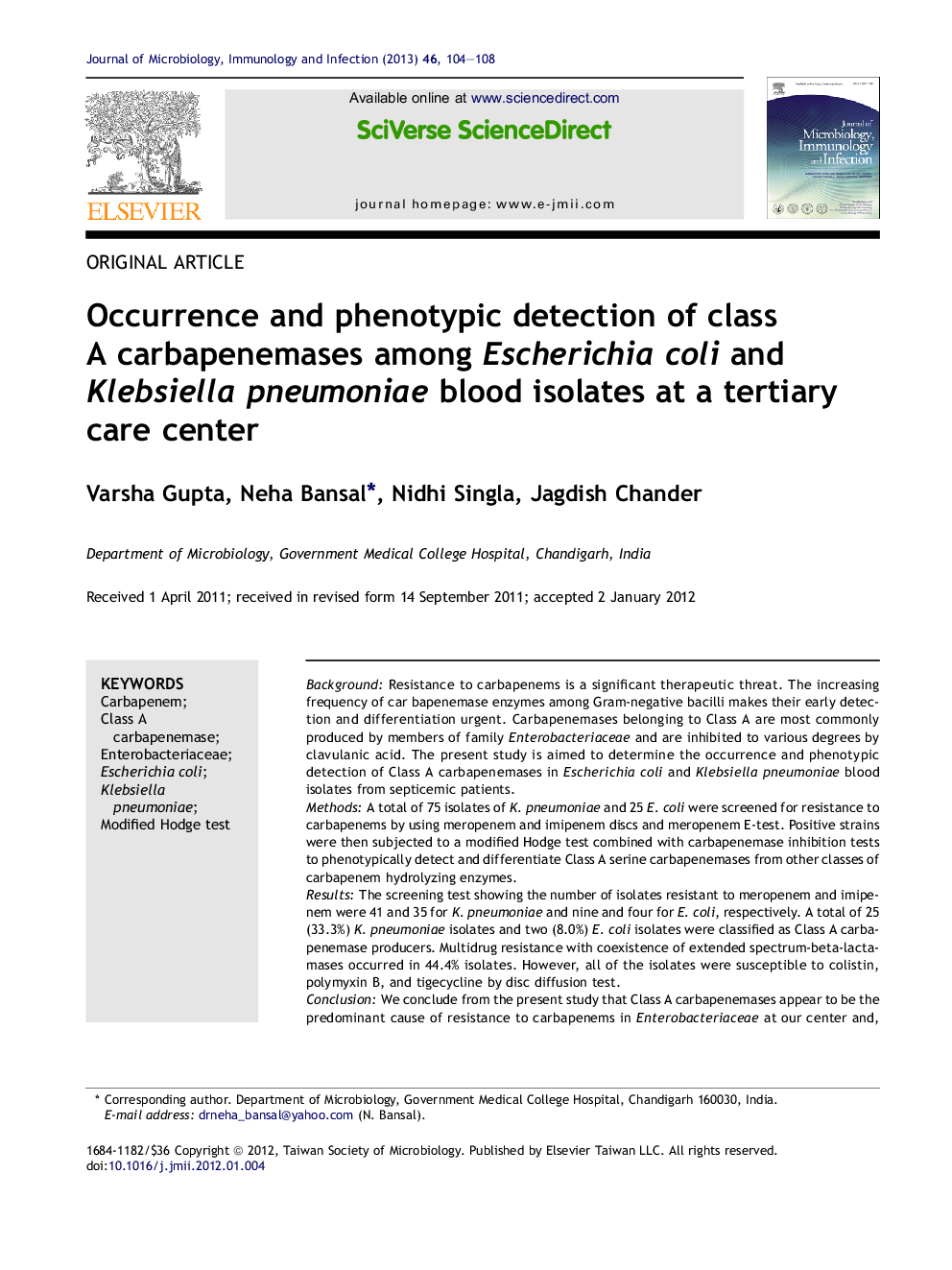| Article ID | Journal | Published Year | Pages | File Type |
|---|---|---|---|---|
| 3378407 | Journal of Microbiology, Immunology and Infection | 2013 | 5 Pages |
BackgroundResistance to carbapenems is a significant therapeutic threat. The increasing frequency of car bapenemase enzymes among Gram-negative bacilli makes their early detection and differentiation urgent. Carbapenemases belonging to Class A are most commonly produced by members of family Enterobacteriaceae and are inhibited to various degrees by clavulanic acid. The present study is aimed to determine the occurrence and phenotypic detection of Class A carbapenemases in Escherichia coli and Klebsiella pneumoniae blood isolates from septicemic patients.MethodsA total of 75 isolates of K. pneumoniae and 25 E. coli were screened for resistance to carbapenems by using meropenem and imipenem discs and meropenem E-test. Positive strains were then subjected to a modified Hodge test combined with carbapenemase inhibition tests to phenotypically detect and differentiate Class A serine carbapenemases from other classes of carbapenem hydrolyzing enzymes.ResultsThe screening test showing the number of isolates resistant to meropenem and imipenem were 41 and 35 for K. pneumoniae and nine and four for E. coli, respectively. A total of 25 (33.3%) K. pneumoniae isolates and two (8.0%) E. coli isolates were classified as Class A carbapenemase producers. Multidrug resistance with coexistence of extended spectrum-beta-lactamases occurred in 44.4% isolates. However, all of the isolates were susceptible to colistin, polymyxin B, and tigecycline by disc diffusion test.ConclusionWe conclude from the present study that Class A carbapenemases appear to be the predominant cause of resistance to carbapenems in Enterobacteriaceae at our center and, thus, phenotypic detection based on simple methods should be employed routinely in clinical microbiology laboratories.
